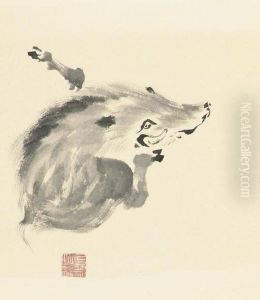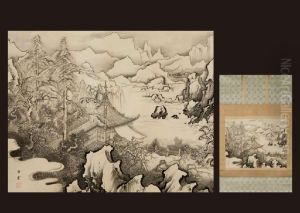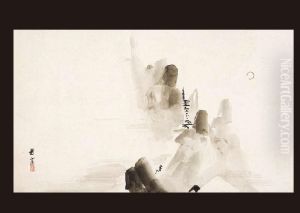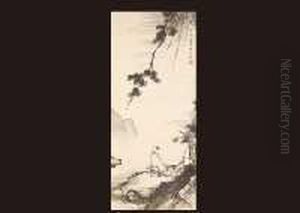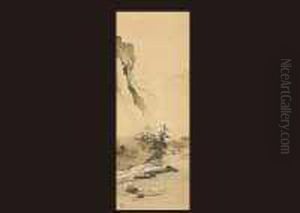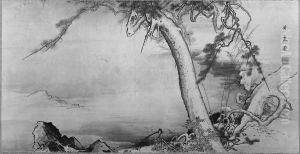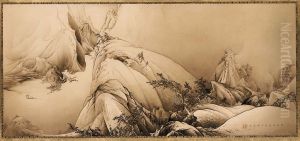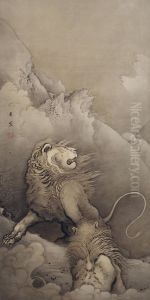Kano Hogai Paintings
Kano Hogai was a prominent Japanese painter of the late Edo period and early Meiji era. Born in 1828, he was a member of the distinguished Kano school of painting, which had been the dominant school of painting in Japan for centuries, known for its strong ties to the ruling class and its influence on the development of Japanese art. Kano Hogai was trained in the traditional Kano school style, which emphasized classical subjects, Chinese-inspired landscapes, and fine brushwork.
Despite his traditional training, Hogai's career spanned a period of significant transition in Japan. The Meiji Restoration of 1868 marked the end of the feudal shogunate and the restoration of imperial rule, leading to rapid modernization and westernization. Japanese artists were suddenly exposed to Western art forms and techniques, and many were grappling with how to reconcile these with their own traditions.
Hogai was an innovative figure during this time of cultural upheaval. He sought to adapt and revitalize traditional Japanese painting (nihonga) in the face of Western influence. He was influenced by the works of Western artists and incorporated some Western techniques into his work, while still maintaining the spirit of the Kano school. His later works display a unique blend of Eastern and Western artistic principles, and he is often credited with helping to modernize nihonga.
Kano Hogai's contributions to Japanese art were recognized late in his life. He was chosen as one of the first artists to be sent by the Japanese government to exhibit his work at the Exposition Universelle in Paris in 1878. Despite this recognition, Hogai faced financial hardship and struggled to find patronage in the changing artistic climate of the Meiji era.
He passed away in 1888, leaving behind a legacy as a transitional figure in Japanese art. His efforts to preserve traditional Japanese painting while also embracing new influences helped to lay the groundwork for future generations of Japanese artists. Today, Kano Hogai is remembered for his role in the evolution of nihonga and for his beautiful, evocative works that reflect a unique moment in the history of Japanese art.
